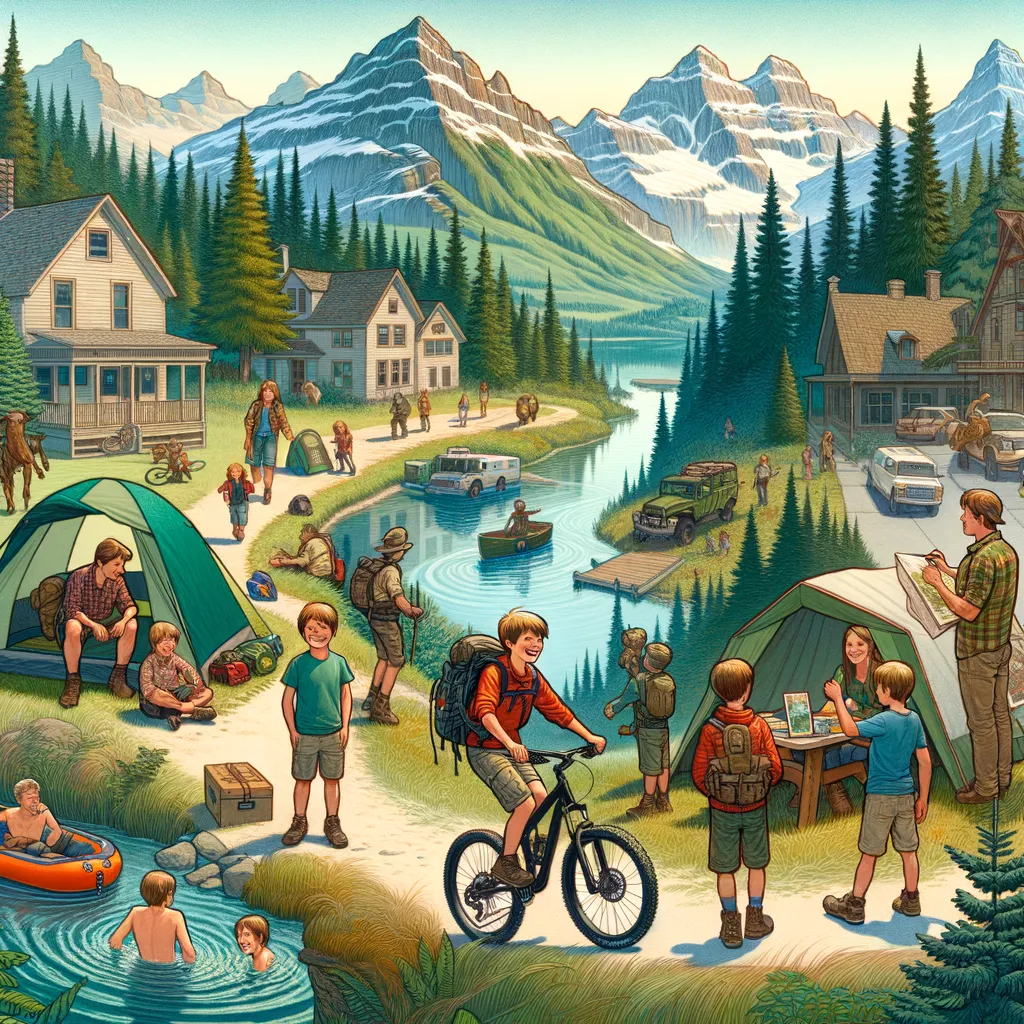Jungle Trekking in Southeast Asia: What to Expect
Welcome to the ultimate guide for parents planning the adventure of a lifetime: jungle trekking in the enchanting landscapes of Southeast Asia! Whether you are a seasoned explorer or a first-timer keen on introducing your family to the wonders of the great outdoors, this guide is packed with invaluable insights to ensure your excursion is not just safe, but also immensely enjoyable.
With its lush forests, diverse wildlife, and rich cultural heritage, Southeast Asia offers some of the most unforgettable trekking experiences in the world. But embarking on such an adventure with kids in tow brings its own set of considerations and preparations. From understanding the terrain to ensuring the safety and joy of every family member, there is much to plan for.
In this comprehensive guide, we delve deep into what families can expect when jungle trekking in Southeast Asia. But before we venture further, remember that preparation is key to any successful outdoor adventure. For quality camping gear essentials, visit Camping. Additionally, for more tips on engaging in Outdoor Activities, be sure to check out the provided link.
Understanding the Jungle Environment
Before setting foot in the jungle, it is essential to familiarize yourself with the environment you and your family will be exploring. Southeast Asia’s jungles are teeming with life and are home to some of the planet’s most diverse ecosystems. The high humidity, frequent rainfall, and warm temperatures year-round define these tropical rainforests. When planning your trek, consider the season; whilst the dry season offers clearer paths and fewer mosquitos, the wet season brings about a bloom in flora and fauna not seen at other times of the year.
Health and Safety Tips for Families
When traveling with children, safety becomes an even greater priority. Insects, such as mosquitoes and leeches, are common in tropical jungles and can be a nuisance or even a health risk without proper protection. Ensure that all family members are up to date with vaccinations and equipped with insect repellent, long-sleeved clothing, and appropriate footwear for the trek. Hydration and energy snacks are also crucial to keep everyone’s energy levels up during the adventure.
Engaging Kids with Nature
Jungle trekking presents a unique opportunity to teach children about nature and conservation. The diverse ecosystems of Southeast Asia’s jungles are perfect for introducing young explorers to different species of plants, animals, and the importance of preserving these environments for future generations. Preparing a scavenger hunt or a wildlife spotting checklist can make the trek more engaging and educational for kids.
Preparing for a jungle trek in Southeast Asia requires attention to detail and consideration for each family member’s needs and expectations. By taking the necessary precautions and involving your children in the planning process, you can ensure a rewarding and memorable experience for all. In the next sections, we will explore more about choosing the right trails, packing essentials, and cultural experiences that await in the heart of Southeast Asia’s jungles. Stay tuned for an adventurous journey where learning and fun go hand in hand, creating lasting memories for your family.

Jungle Trekking in Southeast Asia: What to Expect – A Parent’s Guide
Welcome to the comprehensive guide designed to help parents navigate the thrilling experience of jungle trekking in Southeast Asia. With its vast array of lush landscapes, diverse wildlife, and captivating cultural offerings, Southeast Asia stands out as a premier destination for family-adventure seekers. However, journeying through its jungles, especially with children, requires careful preparation and an understanding of what to expect. This guide aims to equip families with the necessary insights to ensure a safe, engaging, and unforgettable adventure.
The key to a successful jungle trek lies in preparation and adaptability. As such, we’ve outlined five critical considerations every parent should know before embarking on this exciting journey. From health and safety tips to engaging your kids with nature’s wonders, we’ve got you covered.
1. Selecting the Right Trek for Your Family
Understanding your family’s ability and finding a trail that matches this is crucial. Consider the length of the trek, the difficulty level, and the type of experiences you wish to have. Some trails are more suited for older children and those with trekking experience, while others are perfect for beginners or families with young children.
2. Health and Safety Must-Haves
Your family’s health and safety are paramount. Besides ensuring all family members are up to date with necessary vaccinations, packing insect repellent, long-sleeved clothing to protect against bugs, and appropriate trekking footwear are essential steps. Additionally, a well-stocked first aid kit, including antiseptic wipes, band-aids, and possibly antihistamines, is a must-have for any unexpected injuries or reactions.
3. Packing Essentials: Beyond the Basics
Packing light yet efficiently is an art, especially when trekking through the jungle. Beyond the basic necessities, consider lightweight, quick-dry clothing, extra socks to keep feet dry, waterproof bags for electronics and important documents, and a durable, high-capacity water bottle or hydration packs for each family member. Remember, maintaining hydration is key in humid environments. Energy-boosting snacks that won’t melt or spoil can keep spirits high during longer stretches of the trek.
4. Engaging and Educating Young Trekkers
Jungle trekking offers a plethora of opportunities to spark a child’s interest in nature and conservation. Turn the trek into an educational adventure by preparing a scavenger hunt list or a wildlife spotting checklist. Discuss the importance of each species and their role in the ecosystem. Such activities not only make the trek more enjoyable for the young ones but also instill a sense of responsibility towards nature.
5. Understanding and Respecting Local Cultures
Many treks will take you through areas inhabited by local communities. This presents a fantastic opportunity to teach your children about the diversity of cultures and lifestyles. Learning a few basic phrases in the local language can enhance your interaction with the community and show respect towards their culture. Additionally, consider a guide who can bridge the language barrier and offer insights into the local customs, history, and way of life.
Preparing for a jungle trek in Southeast Asia requires attention to detail and a deep commitment to ensuring the safety, enjoyment, and education of your family. It is an experience that, when approached with care and preparation, promises to enrich your family’s connection to nature, to different cultures, and to each other. With the right preparations, your jungle trek can turn into an adventure of a lifetime, weaving together the thrill of exploration with the joy of learning. Equip your family with the knowledge, respect for nature, and enthusiasm for new experiences, and embark on a journey that will create lasting memories, fostering a lifelong passion for adventure.
Embarking on this adventure requires more than just physical preparation; it involves fostering a mindset of respect and curiosity for the natural world and the diverse cultures within it. By integrating these considerations into your journey, you ensure that the adventure is not just about the landscapes you traverse but also about the invaluable lessons and experiences you share as a family. So, gear up, get prepared, and step into the lush jungles of Southeast Asia with confidence, ready to make the most of every moment on this extraordinary family adventure.
Disclaimer
The articles available via our website provide general information only and we strongly urge readers to exercise caution and conduct their own thorough research and fact-checking. The information presented should not be taken as absolute truth, and, to the maximum extent permitted by law, we will not be held liable for any inaccuracies or errors in the content. It is essential for individuals to independently verify and validate the information before making any decisions or taking any actions based on the articles.




